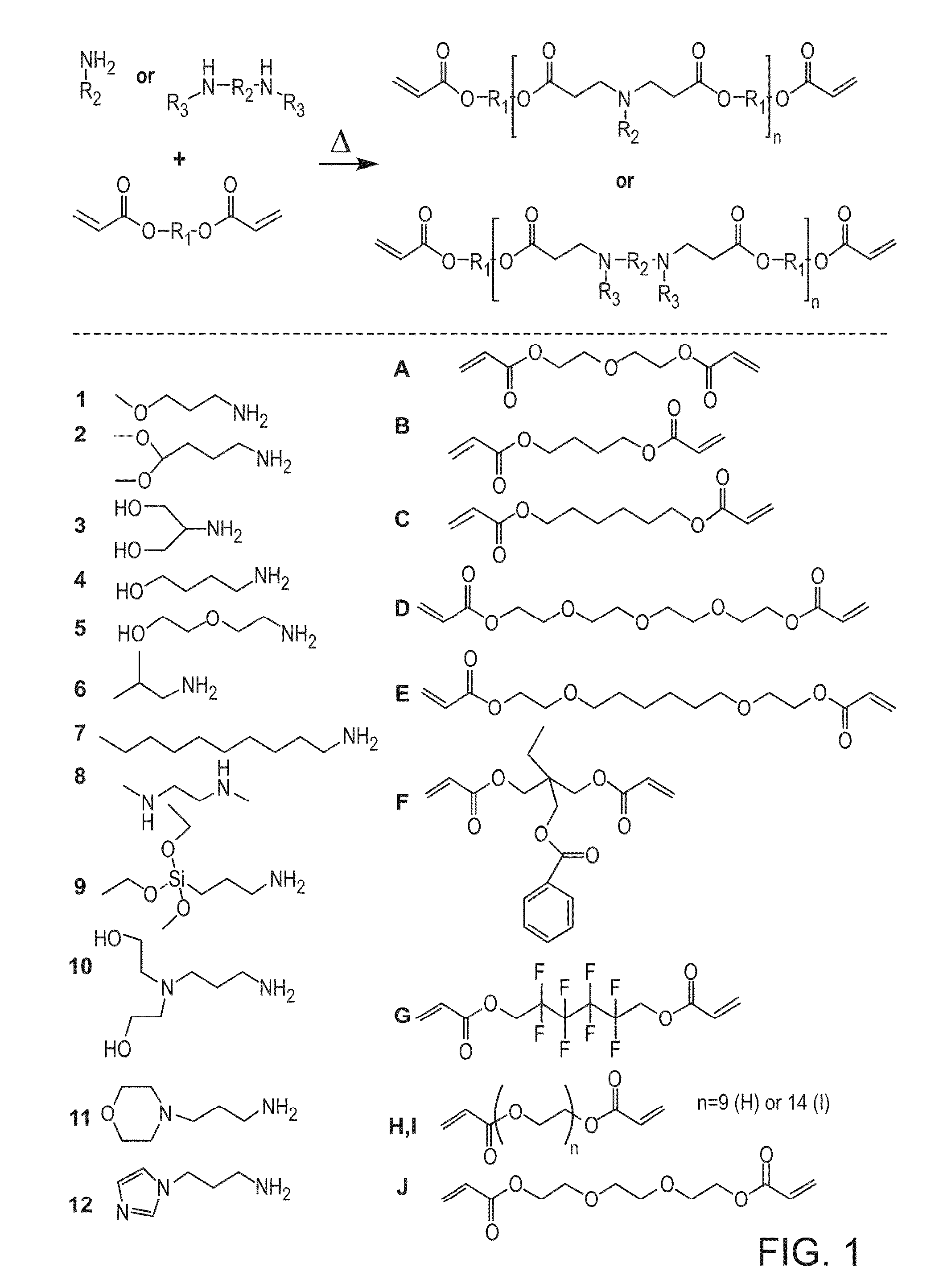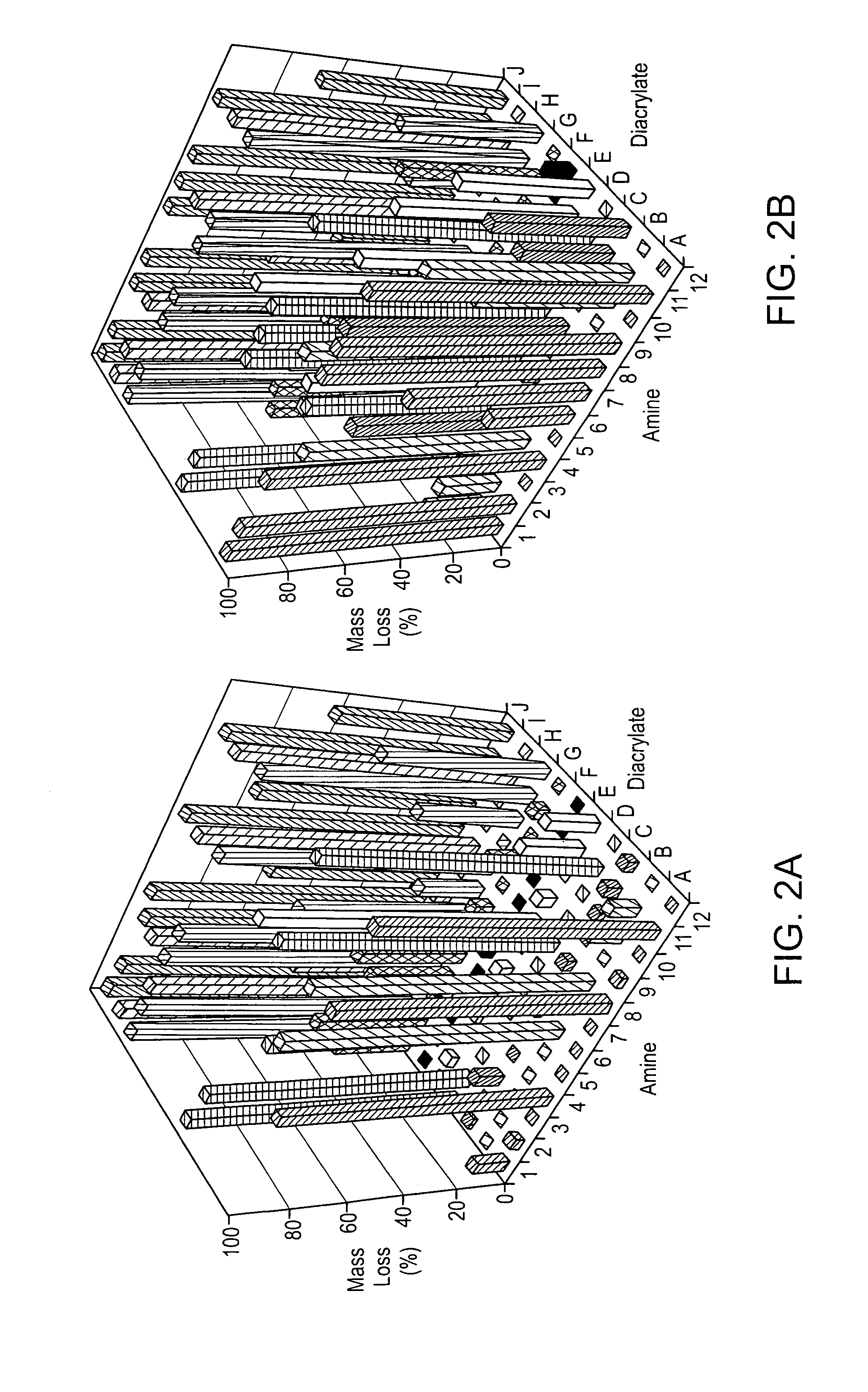Crosslinked, degradable polymers and uses thereof
- Summary
- Abstract
- Description
- Claims
- Application Information
AI Technical Summary
Benefits of technology
Problems solved by technology
Method used
Image
Examples
example 1
A Combinatorial Library of Photocrosslinkable and Degradable Materials
[0131]Photocrosslinkable and degradable polymers are finding a broad range of applications as drug delivery vehicles, tissue engineering scaffolds, and in the fabrication of microdevices (J. Fisher, D. Dean, P. Engel, A. Mikos, ANN REV MATER RES 2001, 31, 171; K. Anseth, J. Burdick, MRS BULL 2002, 27, 130; D. J. Beebe, J. S. Moore, Q. Yu, R. H. Liu, M. L. Kraft, B. H. Jo, C. Devadoss, Proc Natl Acad Sci USA 2000, 97, 13488; each of which is incorporated herein by reference). The synthesis of multifunctional macromers that form these degradable networks commonly involves multiple functionalization and purification steps, which makes the development of large numbers of polymers with diverse properties difficult. Here, we develop the first combinatorial library of degradable photocrosslinked materials. A library of acrylate terminated poly(beta-amino ester)s was synthesized in parallel, via a condensation reaction th...
PUM
| Property | Measurement | Unit |
|---|---|---|
| temperature | aaaaa | aaaaa |
| elastic modulus | aaaaa | aaaaa |
| elastic modulus | aaaaa | aaaaa |
Abstract
Description
Claims
Application Information
 Login to View More
Login to View More - R&D
- Intellectual Property
- Life Sciences
- Materials
- Tech Scout
- Unparalleled Data Quality
- Higher Quality Content
- 60% Fewer Hallucinations
Browse by: Latest US Patents, China's latest patents, Technical Efficacy Thesaurus, Application Domain, Technology Topic, Popular Technical Reports.
© 2025 PatSnap. All rights reserved.Legal|Privacy policy|Modern Slavery Act Transparency Statement|Sitemap|About US| Contact US: help@patsnap.com



